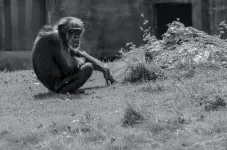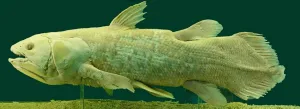INFORMATION:
Dragonflies perform upside down backflips to right themselves
2021-02-10
(Press-News.org) The findings add to current knowledge of how insects fly and keep stable in the air. They could also help to inspire new designs in small aerial vehicles like drones, which can be useful for search-and-rescue attempts and building inspection.
Our colourful sunny-day companions can glide, fly backwards, and travel up to 54 km/h when hunting prey or escaping predators - but like any flying creature, they can be thrown off balance and even find themselves upside down.
Many land-based animals like cats, and aerial animals like hoverflies, rotate themselves around a head-to-tail axis when falling, known as 'rolling', but not much is known about how most insects right themselves from extreme orientations.
In a new study published today in Proceedings of the Royal Society B, Imperial College London researchers have found that unlike many animals documented to date, dragonflies most frequently perform upside down backflips, known as 'pitching', to right themselves from upside down positions in the air.
They also found that dragonflies perform the same righting maneuver whilst unconscious, suggesting the response has a large component of passive stability - a flight mechanism like that which lets planes glide when their engines are switched off. The research reveals how the shape and joint stiffness of the dragonflies' wings provide passive stability and could inform designs for small drones.
Senior author Dr Huai-Ti Lin, of Imperial's Department of Bioengineering, said: "Engineers could take inspiration from flying animals to improve aerial systems. Drones tend to rely heavily on fast feedback to keep them upright and on course, but our findings could help engineers incorporate passive stability mechanisms into their wing structure."
To conduct the study, the researchers dressed 20 common darter dragonflies with tiny magnets and motion tracking dots like those used to create CGI imagery.
They then magnetically attached each dragonfly to a magnetic platform either rightside-up or upside-down with some variations in tilt, before releasing the insects into a freefall. The motion tracking dots provided moving 3D models of the dragonfly movements, which were captured by high-speed cameras for 3D reconstruction.
They found that conscious dragonflies, when dropped from the upside-down position, somersaulted backwards to regain the rightside-up position. Dragonflies that were unconscious also completed the somersault, but more slowly.
Dead dragonflies did not perform the maneuver at all, but when their wings were posed into specific live or unconscious positions by researchers, they were able to complete the righting maneuver - albeit with a little more spin around the vertical axis than in live dragonflies. The researchers say this suggests that the maneuver relies on both muscle tone and wing posture, which is inbuilt in the dragonfly as a passive response rather than an active control.
Lead author Dr Sam Fabian, also of the Department of Bioengineering, said: "Planes are often designed so that if their engines fail, they will glide along stably rather than drop out of the sky. We saw a similar response in dragonflies, despite the lack of active flapping, meaning that some insects, despite their small size, can leverage passive stability without active control.
"Passive stability lowers the effort requirements of flight, and this trait likely influenced how dragonfly shapes evolved. Dragonflies that use passive stability in flight are likely to have an advantage, as they use less energy and are better able to recover from inconvenient events."
The researchers continue to research dragonfly flight biomechanics and will next investigate how these passive effects impact a dragonfly's active vision and guidance strategies in prey interception and obstacle avoidance.
ELSE PRESS RELEASES FROM THIS DATE:
Baby vampire bat adopted by mom's best friend
2021-02-10
During a study with captive vampire bats at the Smithsonian Tropical Research Institute (STRI) in Panama, a young vampire bat pup was adopted by an unrelated female after its mother died. Although this observation was not the first report of adoption in vampire bats, it is uniquely contextualized by more than 100 days of surveillance-camera footage. This footage captured by STRI research associate Gerry Carter's lab at Ohio State University reveals intimate details about the changing social relationships between the mother, the pup and the adoptive mother throughout their time in captivity.
"The adoption took place after a very sad but ultimately serendipitous occurrence," ...
The Lancet Planetary Health: Millions of lives saved annually by 2040 if countries raise their climate ambitions to meet Paris Agreement targets, modelling study suggests
2021-02-10
Adopting policies that are consistent with achieving the Paris Agreement and prioritise health, could save 6.4 million lives due to better diet, 1.6 million lives due to cleaner air, and 2.1 million lives due to increased exercise, per year, across nine countries.
New research from The Lancet Countdown on Health and Climate Change published in a special issue of The Lancet Planetary Health journal highlights the benefits to health if countries adopt climate plans - Nationally Determined Contributions (NDCs) - that are consistent with the Paris Agreement aim of limiting warming to "well below 2°C". [1,2]
The countries considered in the study represent ...
Social distancing in the natural world: Strategies to detect and avoid disease
2021-02-10
The notion of social distancing rose to public prominence approximately a year ago, when health officials began recommending it as a way to slow the spread of the novel SARS-CoV-2 virus. Despite the novelty of the concept among many contemporary human audiences, social distancing has considerable precedent among animals.
Writing in BioScience, Mark Butler of Florida International University and Donald C. Behringer of the University of Florida outline the role of social distancing in nature and compare it with its human counterpart. They describe numerous animals in which distancing has evolved, including guppies, chimpanzees, birds, ants, and mice, among many others. ...
Not a living fossil: How the Coelacanth recently evolved dozens of new genes
2021-02-09
The capture of the first living Coelacanth, a mighty ocean predator, off the coast of South Africa caused quite a stir in 1938, 65 million years after its supposed extinction. It became known as a "living fossil" owing to its anatomy looking almost identical to the fossil record. But while the Coelacanth's body may have changed little, its genome tells another story.
Toronto scientists have now revealed that the African Coelacanth, Latimeria chalumnae, gained 62 new genes through encounters with other species 10 million years ago. Their findings are reported in the journal Molecular Biology ...
Why does love of bargain hunting run in families?
2021-02-09
Headlines like "Black Friday Shoppers Trampled in New York" and popular television shows such as "Extreme Couponing" remind us how crazy consumers can get about retail sales promotions. This enthusiasm for getting bargains has been termed "deal proneness."
Past research has indicated that, to some degree, people become deal prone through being taught by their parents. But a new paper, "Born to Shop? A Genetic Component of Deal Proneness," published in the Journal of the Association for Consumer Research, provides evidence that our genes also play a role in causing bargain-hunting enthusiasm.
To demonstrate this genetic factor, authors Robert Schindler, Vishal Lala, and Jeanette Taylor ...
Can super-Earth interior dynamics set the table for habitability?
2021-02-09
Washington, DC-- New research led by Carnegie's Yingwei Fei provides a framework for understanding the interiors of super-Earths--rocky exoplanets between 1.5 and 2 times the size of our home planet--which is a prerequisite to assess their potential for habitability. Planets of this size are among the most abundant in exoplanetary systems. The paper is published in Nature Communications.
"Although observations of an exoplanet's atmospheric composition will be the first way to search for signatures of life beyond Earth, many aspects of a planet's surface habitability are influenced by what's happening beneath the planet's surface, and that's where ...
Researching ways to improve sustainability and reduce waste in the seafood industry
2021-02-09
Nutritionists have been touting the health benefits of seafood for years. Dietary guidelines recommend that the average adult get at least two servings of seafood per week. But the push to increase our consumption of seafood can put a strain on the seafood industry and create more waste.
"Many fisheries are fully or overexploited," said Lekelia "Kiki" Jenkins, an associate professor at Arizona State University's School for the Future of Innovation in Society in the College of Global Futures. "We are pushing our fisheries to the brink that they can sustain. Meanwhile, consumers are wasting nearly half of the fish they buy. We need to understand our waste behaviors and put a mechanism into place so that we use what we catch."
Jenkins is researching ways to improve sustainability in ...
Sonoporation: Underlying mechanisms and applications in cellular regulation
2021-02-09
Announcing a new article publication for BIO Integration journal. In this review article the authors Yue Li, Zhiyi Chen and Shuping Ge from First Affiliated Hospital of University of South China, Hengyang, China and Tower Health and Drexel University, Philadelphia, PA, USA summarize current state of the art applications of microbubble-cell interactions and sonoporation effects to cellular functions.
Ultrasound combined with microbubble-mediated sonoporation has been applied to enhance drug or gene intracellular delivery. Sonoporation leads to the formation of openings in the cell membrane, triggered by ultrasound-mediated oscillations and destruction of microbubbles. Multiple mechanisms are involved in the occurrence ...
Nanocarriers in the enhancement of therapeutic efficacy of natural drugs
2021-02-09
Announcing a new article publication for BIO Integration journal. In this review article the authors Xiuling Li, Shunung Liang, Chee Hwee Tan, Shuwen Cao, Xiaoding Xu, Phei Er Saw and Wei Tao from Sun Yat-sen University, Guangzhou, China, Guangzhou University of Chinese Medicine, Guangzhou, China and Center for Harvard Medical School, Boston, MA, USA discuss the potential benefits of four plants endogenous to China and the enhancement of their therapeutic efficacy by nanotechnology intervention.
Plant derived natural products have been used for the treatment of various human diseases long before the intervention of modern medicine. The basis of modern medicine is still inspired by traditional medicine and therapies. However, ...
Scientists urge for investment now in highly potent vaccines to prevent the next pandemic
2021-02-09
LA JOLLA, CA--As new COVID-19 variants begin to throw vaccine efficacy in question, two leading scientists are calling for health agencies to invest in the development of vaccines that would be broadly effective against many different variants and strains of potential pandemic viruses.
In a END ...


